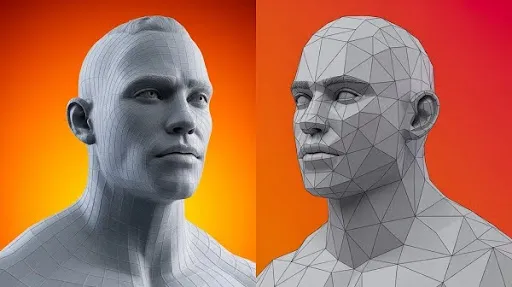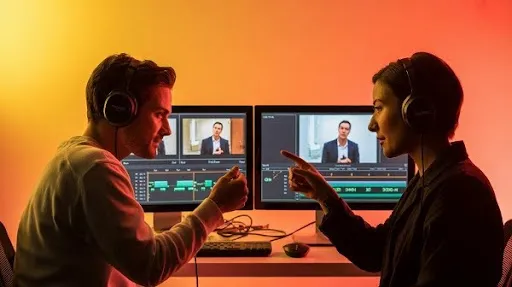There was a time when Disney didn’t just release movies; Disney released moments. Scenes that lived rent-free in our minds for years. Songs that glued themselves to memories. Famous cartoon characters who felt like people we knew.
Disney’s storytelling had a pulse that beat louder than the animation itself, and audiences stayed fully invested in the story without needing any convincing.
That feeling is harder to find now. People talk about the decline of Disney’s storytelling everywhere, online, in reviews, and at family dinners. The conversation has gone from gentle disappointment to full-on frustration. Disney was once the undisputed champion of storytelling and now faces questions about why its spark is slipping.
Is it the shift in leadership? The obsession with franchises? The over-reliance on AI-styled visuals? Or a slow drift away from the basic story arc that made its classics a benchmark in storytelling in animation?
Prolific Studio, a video animation agency working closely with brands, writers, and creative teams, sees the shift with clear eyes. When the once-talented storytellers of a giant lose their grip, smaller creators feel the ripple effect across the whole industry. That’s exactly why this conversation matters.
This isn’t a soft critique. It’s a look at how the king of animated storytelling started to stumble and what this means for the future of Disney storytelling.
Disney’s Storytelling Once Set the Standard
Disney didn’t just make animations. Disney set the rules for how audiences engage in storytelling.
During the golden age of Disney storytelling, everything clicked: heart, humor, character arcs, and messages that lasted long after the credits rolled.
Films like The Lion King, Beauty and the Beast, Aladdin, Tarzan, and Hercules weren’t just entertaining. They were emotional blueprints. Each one had a clear journey, a strong emotional core, and characters who changed us almost as much as they changed within the story.
People didn’t walk out thinking, “That was cute.”
They walked out thinking, “I felt that.”
That’s emotionally rich storytelling. It’s what made Disney untouchable.
Why These Classic Films Worked
Back then, Disney’s creators understood something many studios forget today: stories don’t need heavy graphics to matter.
They need:
- Clear emotional stakes
- A character worth rooting for
- A conflict that feels personal
- Growth that feels earned
This is the magic behind the basic story arc audiences subconsciously look for.
Take The Lion King. It used hand-drawn animation, not the advanced 3D animation services available today. Yet it delivered a punch that still hits hard. People watched Simba collapse against Mufasa’s body and felt every second of his heartbreak. Not because of the visuals, but because the story allowed that moment to breathe, to stay raw, to feel human.
Disney’s storytellers once built narratives where nothing felt shallow or rushed. You always knew why a character behaved a certain way. Every scene earned its weight.
Where the Decline of Disney’s Storytelling Began
The shift didn’t happen overnight. You can almost point to specific moments that signaled trouble. Industry changes. Leadership changes. Technology shifts. There is a growing pressure to produce content faster for streaming platforms.
Each one chipped away at Disney’s storytelling foundation.
1. The Franchise Obsession
Disney went all-in on the idea that sequels and remakes were the safest way to make money.
But safety often kills creativity.
Audiences started noticing that many remakes felt hollow. Yes, they looked impressive. The animation process was expensive and flashy. But the heart wasn’t there. The live-action Lion King proved that visual accuracy means nothing without emotional depth.
People kept asking the same thing:
“Why remake the magic if you can’t recreate the feeling?”
2. Style Over Story
Studios everywhere love new animation tech, from 3D animation services to AI-assisted tools. But Disney leaned too heavily on visual spectacle. Many films looked incredible, sometimes jaw-dropping, but lacked a good story or character development.
Audiences can forgive simple visuals. They can’t forgive empty stories. That’s why movies like Wish were criticized. The animation was clean, polished, and even experimental. Yet the story felt thin.
Reviews kept repeating the same phrase:
“Beautiful, but no soul.”
3. Creative Voices Losing Power
Disney once gave creative writers and storytellers the freedom to explore risky ideas. Today, many insiders talk about stricter filters, executive notes, formula restrictions, and committees shaping scripts.
When decisions come from fear instead of passion, good stories die early.
This shift created a pattern: films that look correct on paper but feel wrong in execution.
The Emotional Disconnect: Why Audiences Feel Less Attached
Fans aren’t confused about their disappointment. They know exactly what feels off.
Characters Don’t Feel Human Enough
Classic characters had flaws, limits, fears, mistakes. They felt real.
Modern characters often feel too perfect, too fast, or too underdeveloped.
A character needs room to fail for an audience to care.
Stories Don’t Sit Long Enough in Their Emotions
Disney’s older films didn’t rush. They allowed quiet moments, heavy silences, scenes that hit slow and deep.
Newer films often jump from scene to scene without lingering where it matters.
Emotion disappears when a story refuses to breathe.
Themes Feel Surface-Level
The heart of Disney used to come from universal themes, love, loss, identity, sacrifice, courage.
Those themes are still attempted but not explored in depth.
A lesson doesn’t land if it’s only spoken, not lived through the story.
Disney’s Storytelling and the Burden of Modern Expectations
With streaming platforms, constant content cycles, and pressure to keep franchises alive, Disney found itself stuck in a loop of quantity over quality.
Parents say the same thing:
“Earlier Disney movies were fun for us, too. Now they feel like they’re made only for kids.”
This is a dangerous shift. Disney films used to unite generations. Emotional storytelling isn’t a children-only experience.
When adults feel disconnected, the magic dies faster.
Hand-Drawn Animation vs Today: Is the Soul Missing?
This debate sparks everywhere online. People miss hand-drawn animation. They miss the imperfections, the textures, the nostalgic feel.
Modern films use advanced techniques, but some argue that the charm is missing.
Hand-drawn animation forced storytellers to rely on strong writing because visuals couldn’t hide weak stories.
Today, visuals are often used as a mask.
Great storytelling doesn’t depend on the tool used to animate. It depends on why the story exists in the first place.
Disney’s Current Struggle with the Balance Between Visuals and Story
The decline in storytelling standards isn’t rooted in technology. Technology is only a tool. The problem comes from misplacing priorities.
When visuals get more attention than character motivations, audiences disconnect.
When a film looks expensive but feels empty, the reaction is harsher.
The heart of animation is still emotion. No amount of 3D gloss can replace emotional clarity.
A strong story can survive average animation.
Beautiful animation cannot save a shallow story.
The Harsh Truth: People Want Emotion, Not Perfection
Disney’s earlier stories made people cry, laugh, hope, heal, and grow. They created memories.
That is experiential storytelling. It leaves you with something you carry into real life.
Many new releases feel like they were built in a lab. Perfect lines, perfect structure, perfect visuals, yet no spark.
Audiences want messy stories. Flawed characters. Real emotions.
When the magic doesn’t feel human, it doesn’t feel like Disney.
Disney’s Modern Era: Shiny Looks, Fading Heart
Scroll through social feeds, and you’ll see the same gripe over and over: Disney’s storytelling isn’t what it used to be. Beautiful visuals, perfect animation, but the heart? Missing.
Movies like Wish and Disenchanted tried to wow audiences with new tech, some even blending 2D animation services with 3D effects. Sure, it looked stunning. But did anyone actually care about the characters? Not really.
A video animation agency like Prolific Studio sees this every day. People don’t just watch colors move, they live the story. Audiences connect when the stakes feel real. When the characters feel human. And when the emotions aren’t rushed.
Disney once nailed that. Now it’s a mix of hand-crafted charm and corporate caution. The result? A decline in storytelling standards that anyone can spot.
Sequels, Remakes, and the Illusion of Innovation
Remakes were supposed to be safe. Easy money. But safety killed the spark.
The live-action Lion King looked flawless. Every hair on Simba’s mane. Every sunset glowing. But did we feel Simba’s grief the same way we did in the 1994 version? Nope. The story hit the same notes, but the soul was quieter.
Even classics like Pinocchio or Snow White weren’t safe from edits. Modern touches, softening lessons, tweaking characters, might appeal today, but they dilute the emotional core.
It’s not about the animation process or even how much does animation cost. It’s about fully investing in the story. Audiences notice when characters feel distant. They notice when stakes feel fake.
Disney’s golden age thrived because stories made us care, not just look.
Experiential Storytelling: Parks to Screens
It’s not all bad. Disney parks still crush experiential storytelling. Star Wars: Galaxy’s Edge isn’t just a ride; it’s stepping into a story. You participate. You feel it.
This proves something important: emotionally rich storytelling isn’t just for movies. Disney knows how to make experiences stick. Translating that back to films? Tricky. Spectacle isn’t a substitute for heart.
A video animation agency that works on these experiences knows it firsthand. Balancing wow-factor and emotional depth is hard. One without the other feels incomplete.
Finding the Story in Modern Films
Some films still get it. Soul and Encanto delivered on emotionally rich storytelling. Characters felt alive. Themes weren’t just told, they were lived.
Turning Red sparked debate, sure. But at its core, it hit the mother-daughter relationship in a way that stuck. The lesson? Focus on good story or character development, and people will connect. Always.
Disney can still be the undisputed champion of storytelling. They just need to remember what made them legendary: characters you root for, themes that linger, and stories that make people feel seen.
Future of Disney Storytelling: A Path Forward
The roadmap is simple, if Disney dares to take it.
Give creative writers and storytellers freedom. Oversight is safe. Safe rarely inspires. Risky, messy, emotional stories? Those are the ones people remember.
Hand-drawn animation isn’t dead. 2D animation services still create magic. Hybrid styles can shine if the story leads.
Fewer releases. Stronger releases. One fully invested story beats ten half-hearted ones every time. Audiences want flaws, failures, growth, hope. Messy, human stories. Disney needs to embrace that again.
Frequently Asked Questions
Has Disney lost its magic completely?
Not at all. Films like Encanto and Soul prove it’s still there. The challenge is consistency.
Why do some new movies feel empty?
Visuals often overshadow the story. Stunning animation can’t save weak arcs or shallow characters.
Is hand-drawn animation better than 3D?
Not automatically. Hand-drawn once forced storytelling. But 3D or hybrid animation works if the story drives it.
Can Disney regain its golden age quality?
Yes. Prioritize emotionally rich storytelling. Give creative freedom. Let characters grow.
How much does animation cost to maintain storytelling quality?
It varies. But investing in story and fully developed characters is priceless.
Final Words
Disney’s storytelling can rise again. The tools exist. The talent exists. The audience is ready.
The key: focus on stories that matter, characters that live beyond the screen, and themes that stick.
Stop chasing trends. Stop chasing perfect visuals. Fewer remakes. Fewer franchise fillers. More risk. More emotion.
Disney can reclaim its spot as the undisputed champion of storytelling. The path is clear: bring back emotionally rich storytelling, honor the golden age, and remind audiences why they loved the famous cartoon characters in the first place.
The magic isn’t gone, it’s waiting to be told.
Related Articles:







